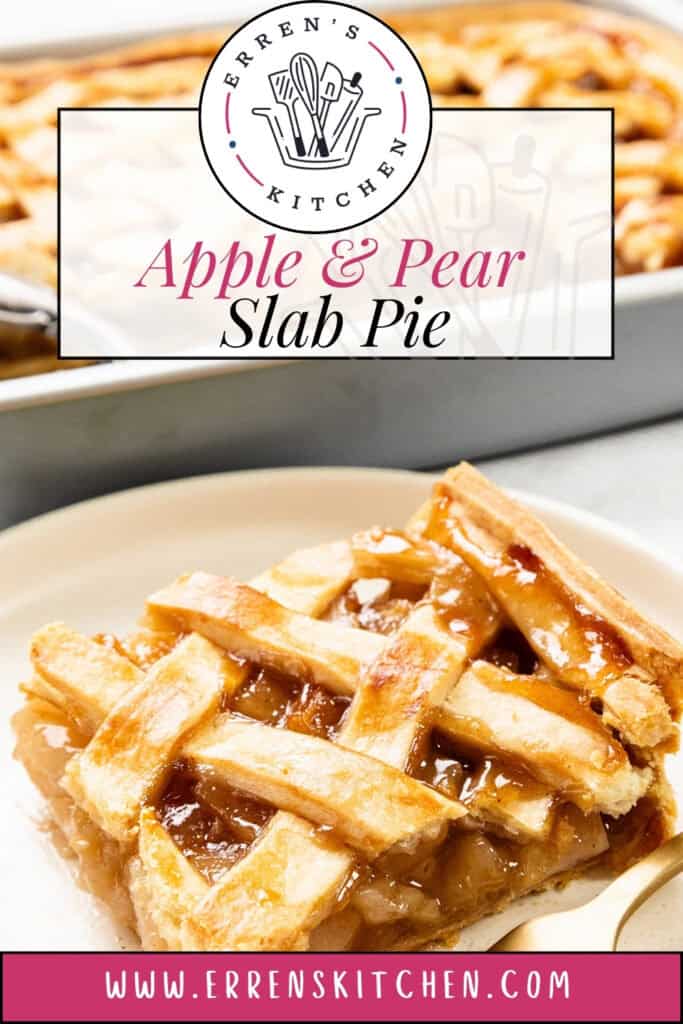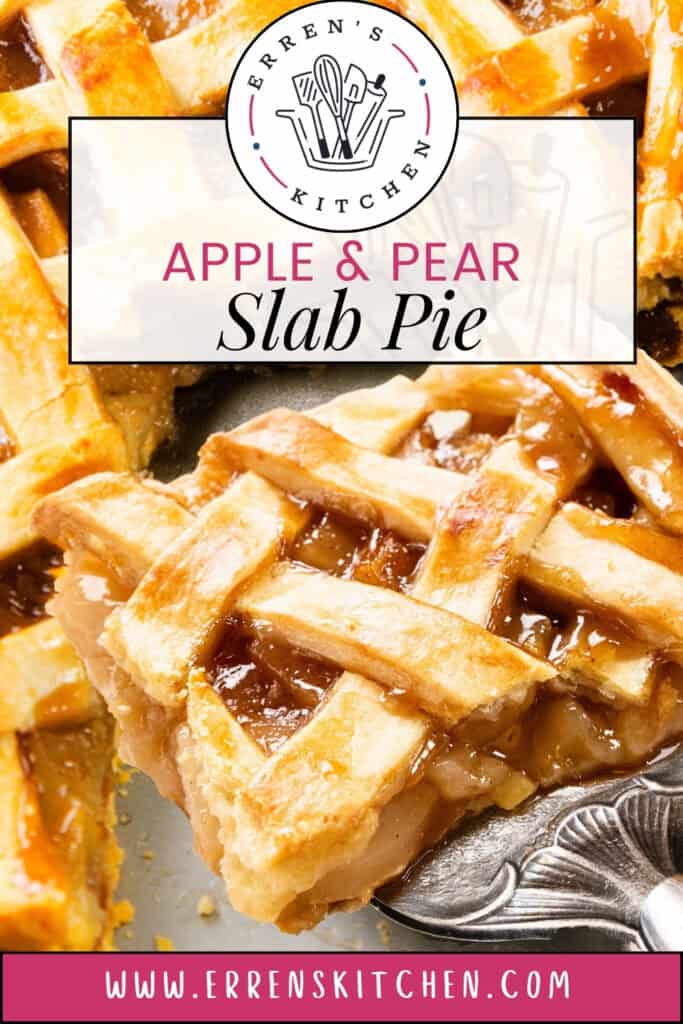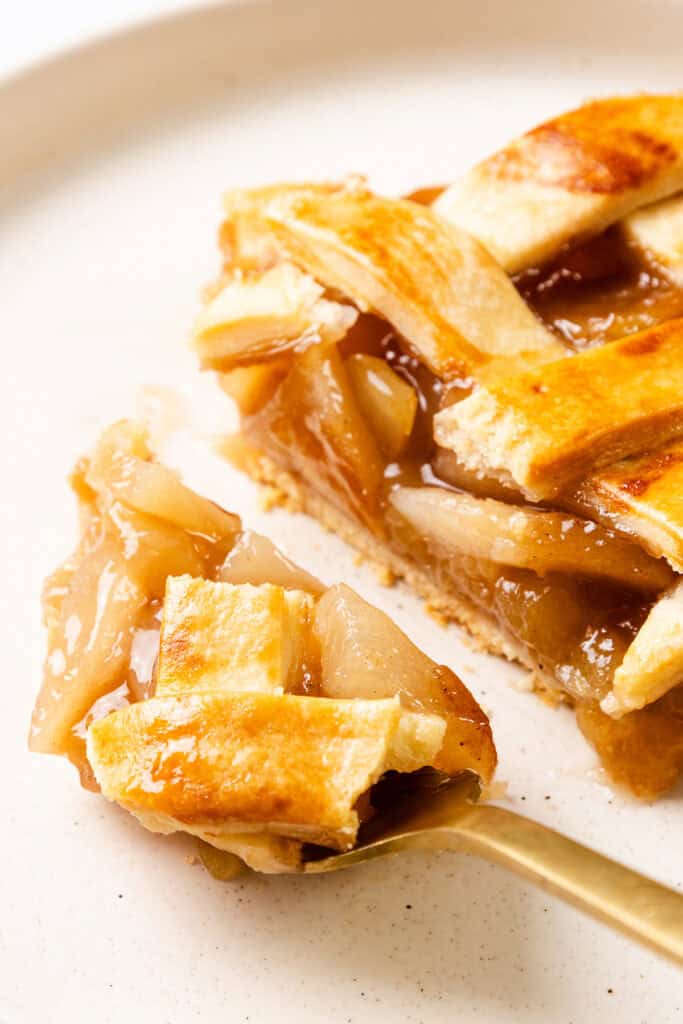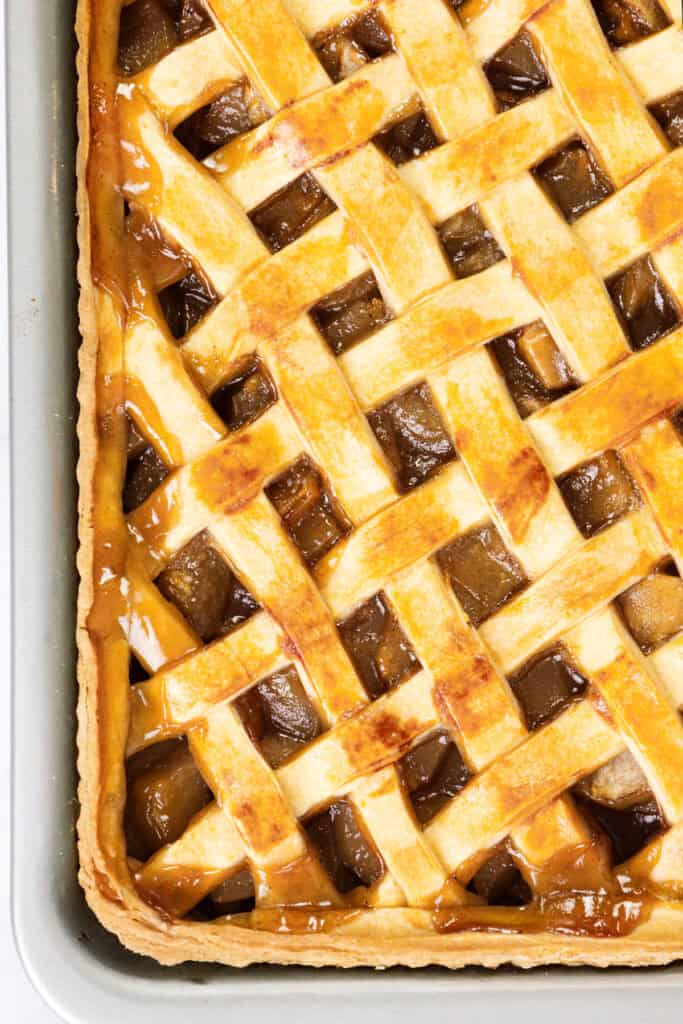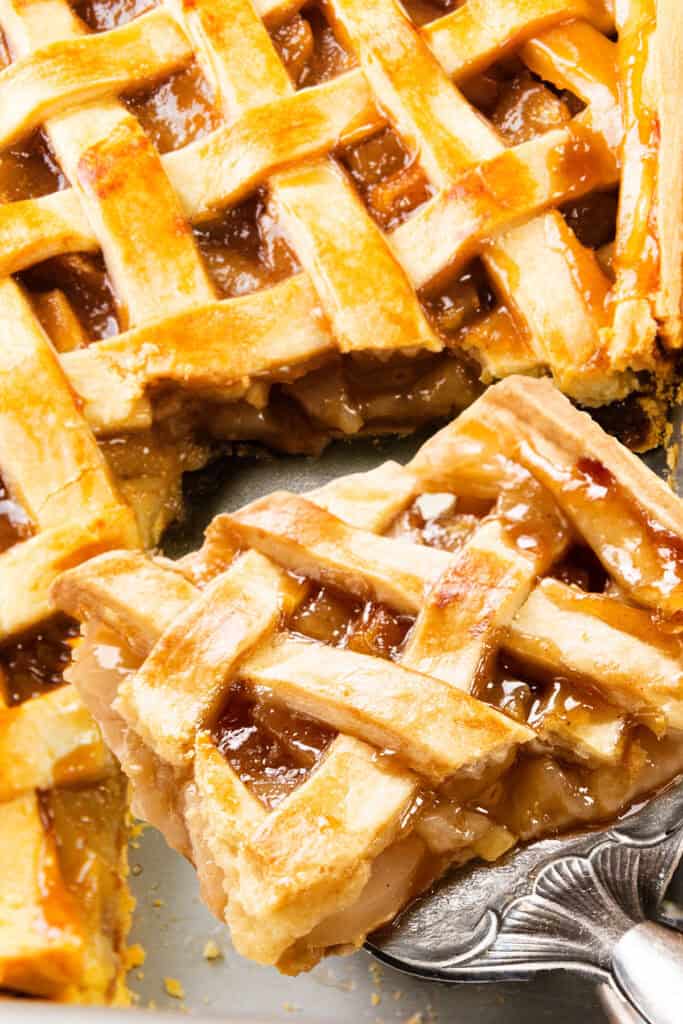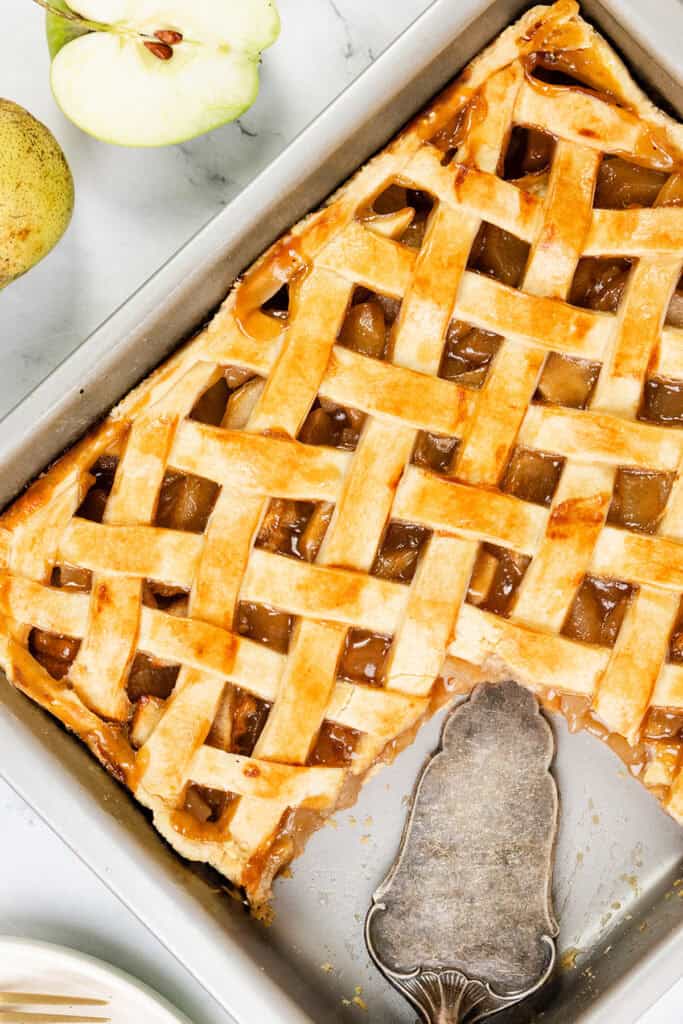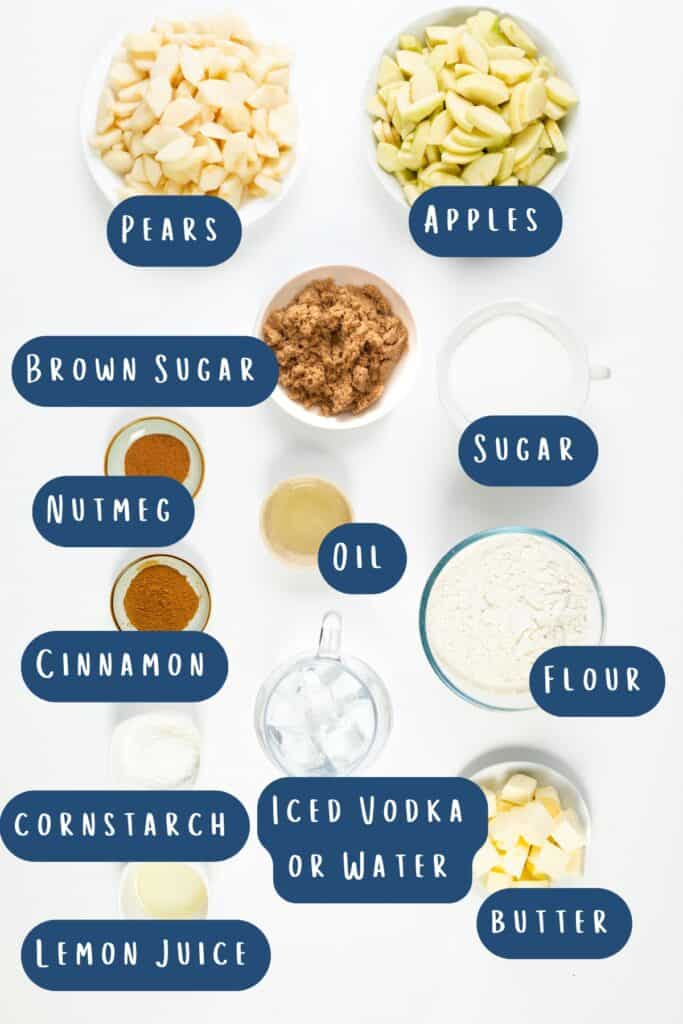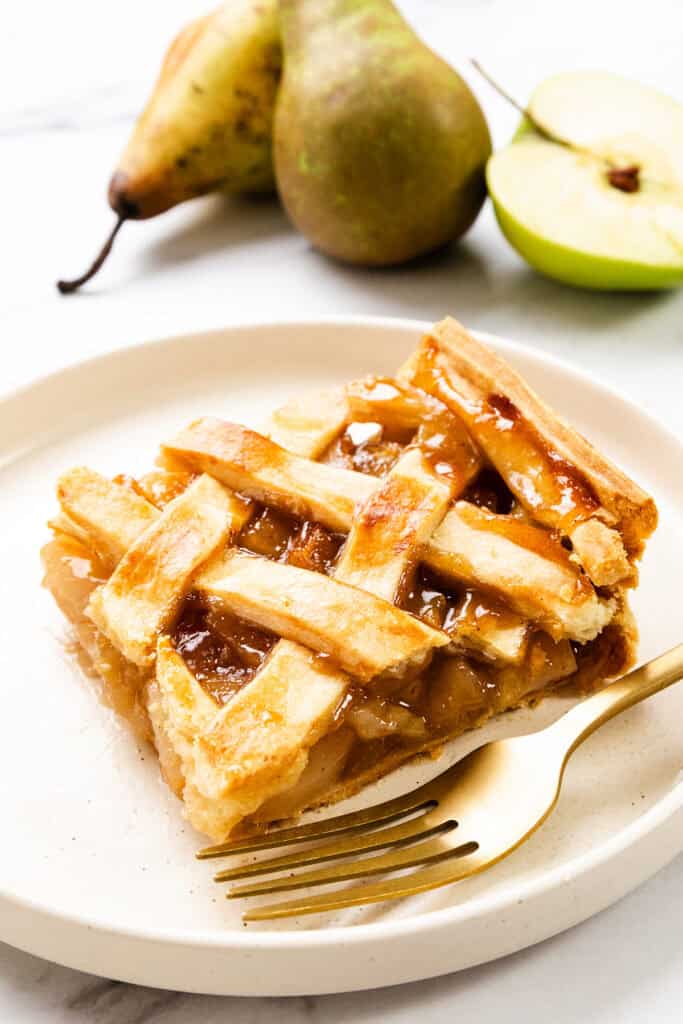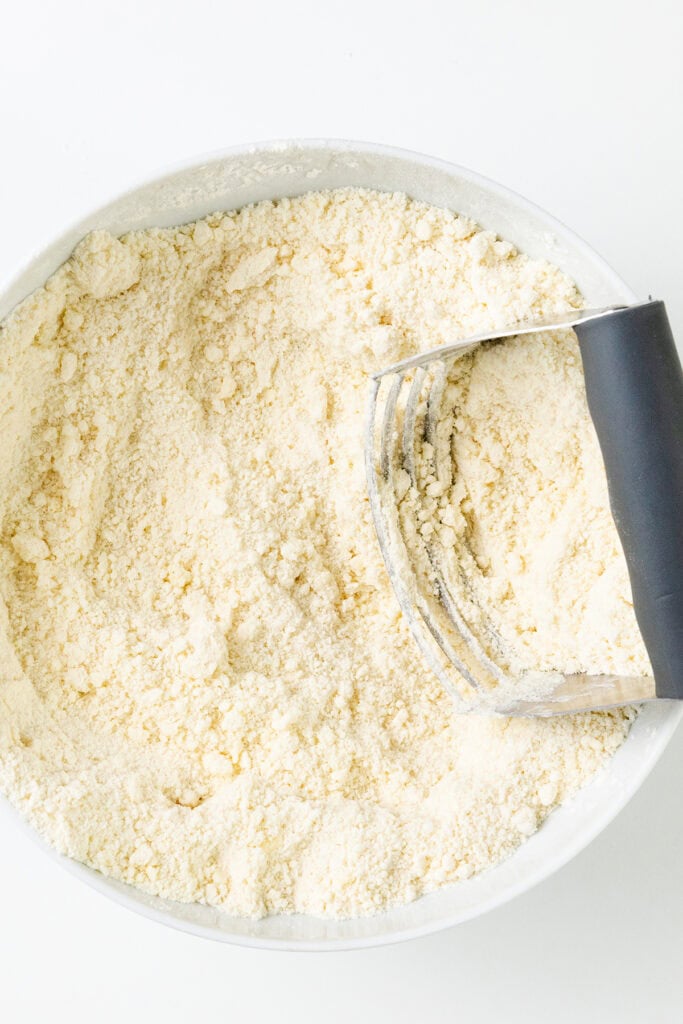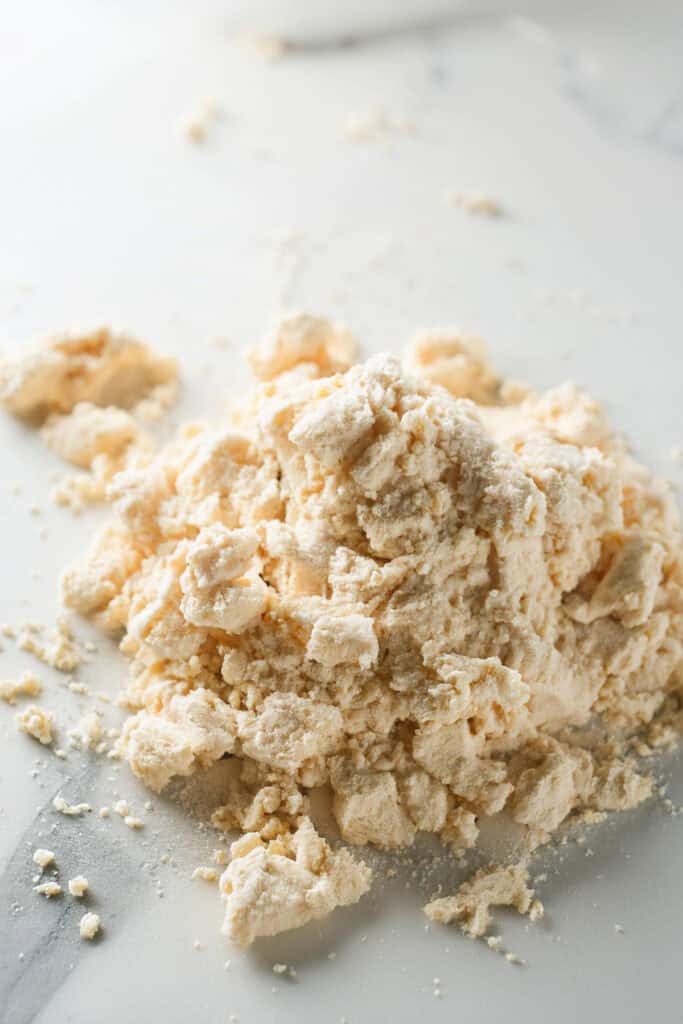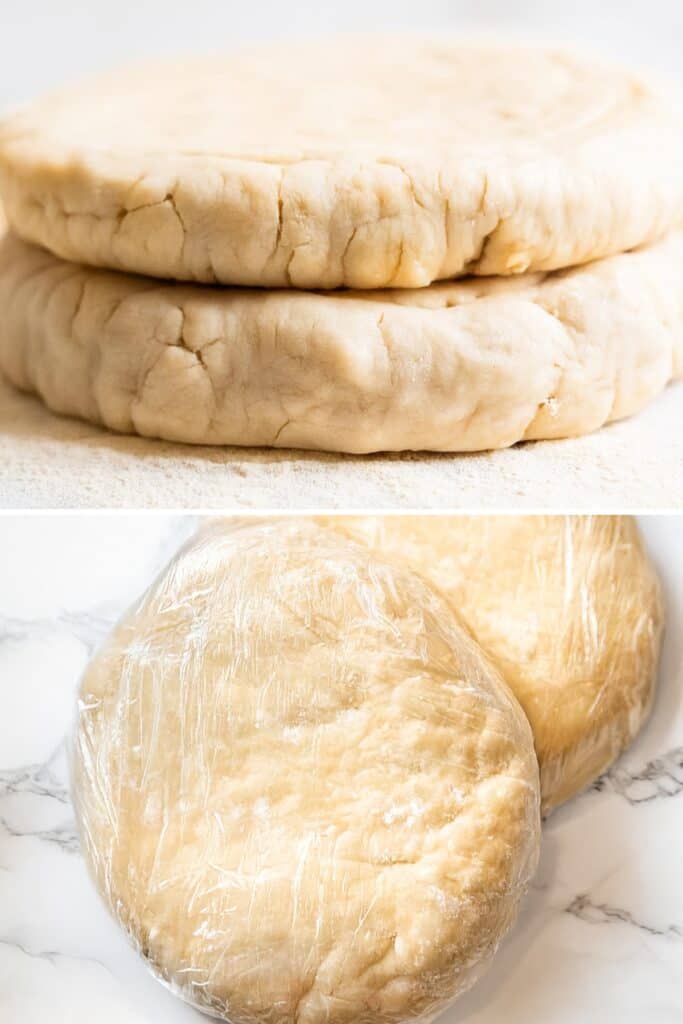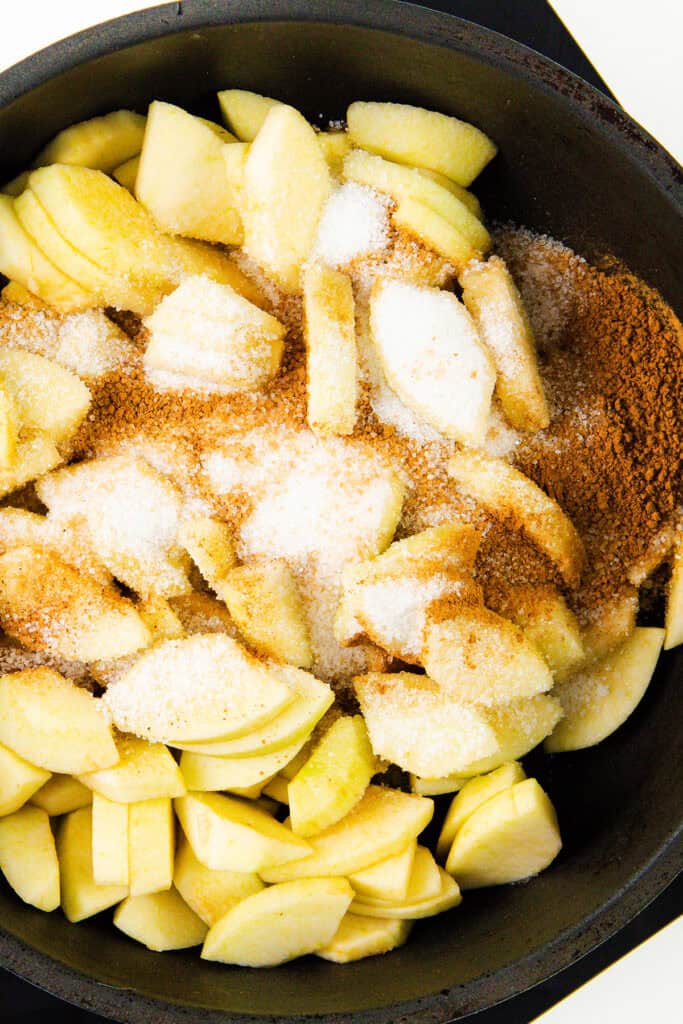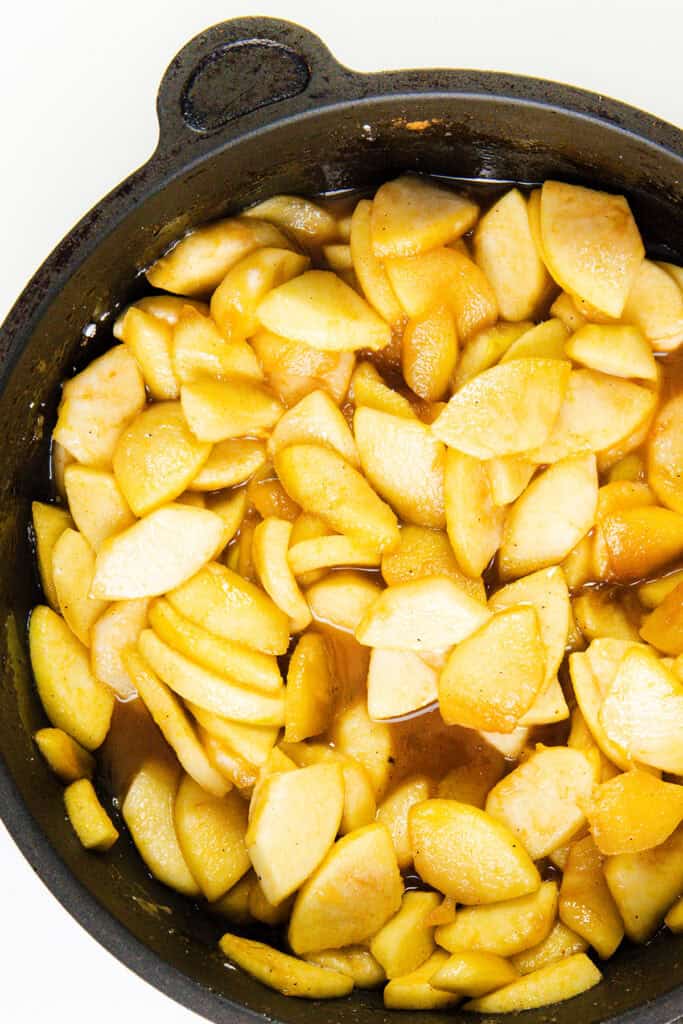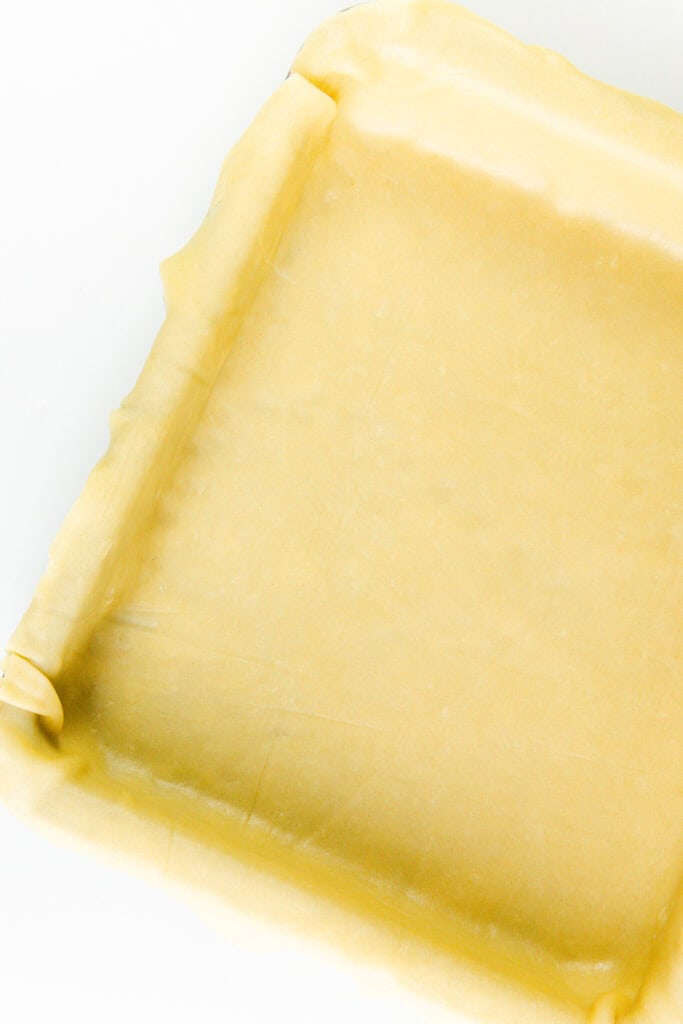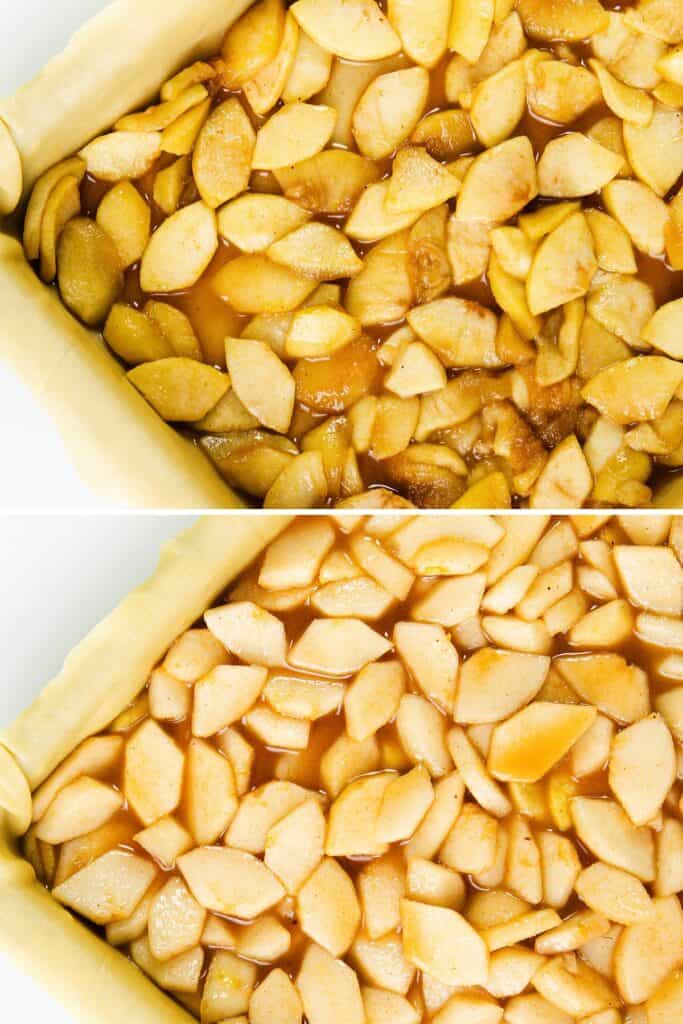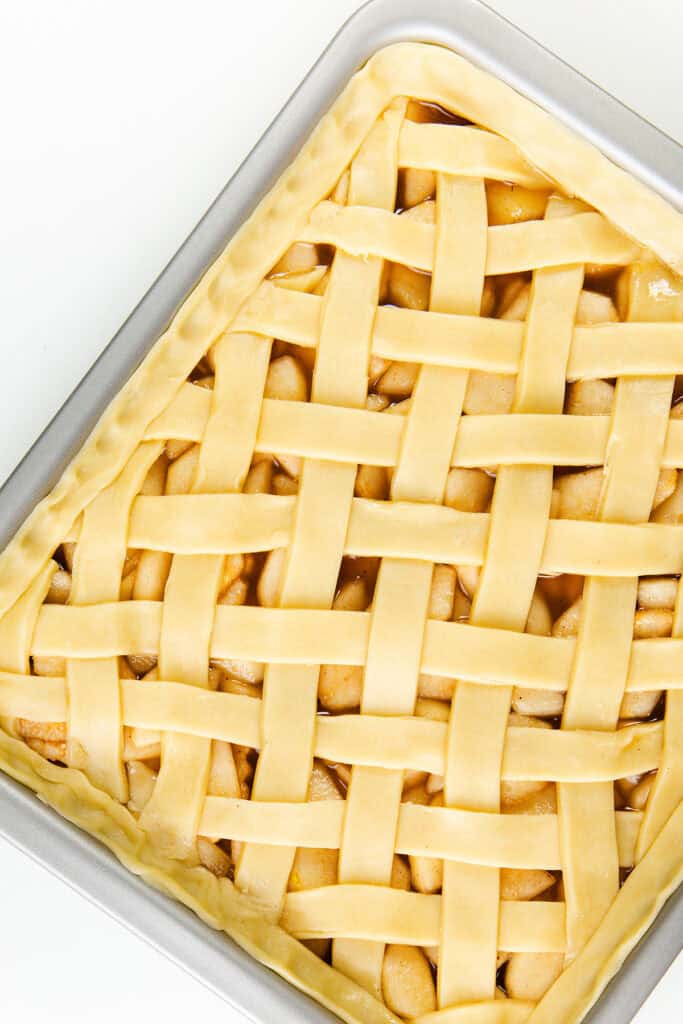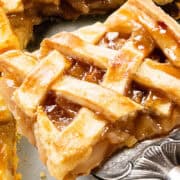Every Thanksgiving, I host a dinner for 15 to 20 people, meaning I need desserts to feed a crowd. That’s how this Apple and Pear Slab Pie became a new holiday staple. Unlike traditional pies, this recipe uses a 9×13 pan and separates the fruit into two layers. Because apples and pears cook at different rates, the apples are cooked briefly before baking to ensure both layers are tender and flavorful by the time it’s ready to serve. The result? A perfect blend of sweet pears and spiced apples in every bite, with a flaky crust that family and friends can’t get enough of. A 9×13 slab pie typically serves about 12 to 15 people, depending on how large you cut the pieces. For smaller portions, especially if it’s part of a larger dessert spread with treats like pumpkin pie or pumpkin bundt cake, you could get up to 18 servings. This makes it an ideal choice for feeding a crowd at family gatherings or holiday meals.
Step By Step Instructions
You can find the full, printable recipe at the bottom of this post (click the button above), but you can read a summary with step-by-step instructions and photos for each step below.
To Make The Crust
In a large mixing bowl, combine 5 cups (600g) of all-purpose flour and 1 teaspoon of salt. Toss vegetable oil in 3 tablespoons to lightly coat the flour. Add 1½ cups (340g) cold, cubed unsalted butter. Use a pastry cutter or your fingers to blend until the mixture resembles coarse crumbs. Sprinkle 6 tablespoons of ice water over the mixture. Stir and press dough together, using a stiff rubber spatula, until the dough is evenly moistened and very crumbly. Dump the crumbly dough onto a clean surface. Grab a bit of the mixture and pinch it between your fingers. It should hold its shape. If it falls apart or feels too dry and floury, just add a bit more water, a tablespoon at a time, being careful not to overwork the dough. Split it into two piles, making one about 15% bigger than the other. Then, use your hands to knead the dough into a soft, pliable disk quickly. Wrap in plastic wrap, and refrigerate for 1 hour.
Prepare the Apple Filling
In a saucepan, combine 6 cups (720g) of sliced apples, ⅔ cup (130g) granulated sugar, 2 tablespoons (25g) light brown sugar, 2 teaspoons of cinnamon, and ¼ teaspoon of nutmeg. Cook over medium heat, stirring occasionally, for 5 minutes or until the apples soften slightly but retain shape. Remove from heat and stir in 2 tablespoons (16g) cornstarch and 1 tablespoon (15ml) lemon juice. Set aside to cool.
Prepare the Pear Filling
In a mixing bowl, combine 5 cups (600g) of sliced pears, ½ cup (100g) granulated sugar, 2 tablespoons (25g) light brown sugar, 2 teaspoons cinnamon, ¼ teaspoon nutmeg, 2 tablespoons (16g) cornstarch, and 1 tablespoon (15ml) lemon juice.
Assemble the Pie
Preheat the oven to 500°F (260°C). Preheating a baking sheet or stone helps the bottom crust become crisp. Roll out the second disc of dough on a lightly floured surface to ⅛-inch thick (3 mm), about 1 inch wider than the pan. Transfer it to a parchment-lined baking sheet, cover with plastic wrap, and refrigerate for 30 minutes. Scatter about 2 tablespoons of old-fashioned oats across the bottom of the dough-lined pan. This will absorb extra juices from the fruit and help prevent a soggy crust. Spoon the apple filling evenly over the bottom crust, creating the first layer of fruit. Next, gently layer the pear filling over the apples, spreading it to cover the entire pan. Roll out the second disc of dough, then add it using your preferred method. Seal the edges by pressing the lattice and bottom crust together, trimming any excess dough. Reduce the oven temperature to 425°F (220°C) and place the pie on the preheated baking sheet or stone. Bake for about 20 minutes, until the crust is light golden brown. Lower the oven temperature to 375°F (190°C). Cover the edges of the pie with foil to prevent over-browning, and carefully rotate the baking sheet. Continue baking for another 30–35 minutes, until the filling is bubbling and the crust is deep golden brown. Let the pie cool for at least 30 minutes before serving. Use Iced Vodka or Water Carefully: When adding the liquid, remember to add only the iced vodka or water—not the ice cubes. Cold liquid keeps the butter from melting and makes the dough easier to roll out. The vodka adds moisture without developing gluten, which leads to a softer crust. Pre-cook the Apple Filling: Apples can take longer to cook than pears, so lightly cooking them before baking helps both fruits reach the perfect texture at the same time. Absorb Extra Juices with Oats: Sprinkle a layer of old-fashioned oats on the bottom crust before adding the filling. The oats will soak up extra juice from the fruit as it bakes, keeping the crust from getting soggy without affecting the flavor. Rest the Dough Before Rolling: After you chill the dough, let it rest for a few minutes at room temperature before rolling it out. This reduces cracking and makes it easier to shape without tearing. Prevent Over-Browning with Foil: If you notice the crust edges browning too quickly, cover them with foil partway through baking. This will protect the edges while the filling finishes cooking. Look for Bubbling Filling: A bubbling filling is a good sign that the cornstarch has fully activated and thickened the juices. This helps ensure that your pie slices will hold their shape instead of being too runny. Cool Completely Before Slicing: Allowing the pie to cool for at least 2 to 3 hours helps the filling set and makes it easier to slice cleanly. It’s tempting to cut in while it’s warm, but a little patience goes a long way to a perfectly presented slice! Use a Baking Stone or Preheated Baking Sheet: Placing the pie on a preheated baking sheet (or baking stone if you have one) helps the bottom crust bake evenly and become crisp. Try a Lattice Top if Desired: For a beautiful finish, consider using a lattice pattern on the top crust. This allows steam to escape while also giving the pie an attractive, traditional look. Freezing: To freeze, wrap the baked, cooled pie tightly in plastic wrap and then in aluminum foil. Freeze for up to 3 months. Thaw at room temperature before reheating. Erren’s Kitchen is written and produced for informational intentions only. We are not certified nutritionists, and the nutritional information found on this site has not been assessed or authorized by a nutritionist or the FDA. The nutritional information found in our recipes is offered as an estimate and should not be considered a guarantee or fact. The estimated data is provided as a courtesy and calculated through a third-party online nutritional calculator, spoonacular API. Although we do our best to provide accurate nutritional information, these figures should be considered rough estimates. Many factors, such as brands or products purchased and the nutritional fluctuations that naturally occur in fresh produce, can alter the effectiveness of the nutritional information in any recipe. Furthermore, various online calculators provide different results depending on their particular algorithms and nutrition fact sources. To obtain the most precise nutritional information in a provided recipe, you should calculate the nutritional information with the exact ingredients you are using when preparing the recipe using your preferred nutrition calculator.
